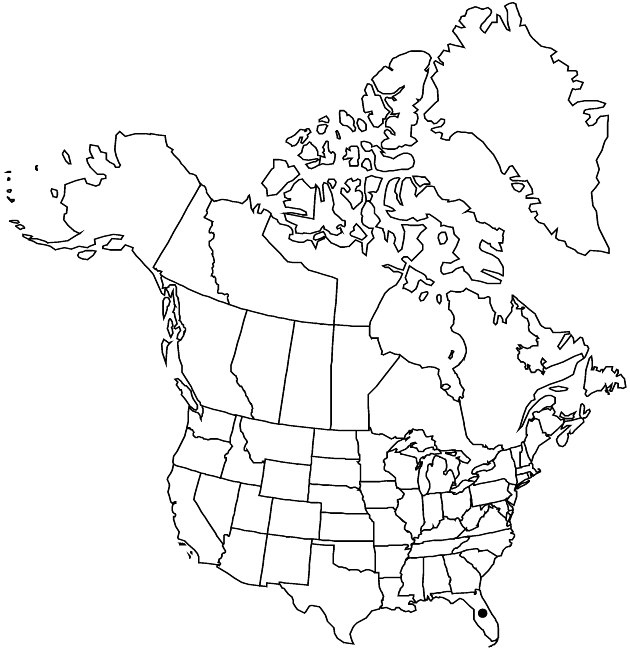Ambrosia hispida
Fl. Amer. Sept., 2: 743. 1813.
Revision as of 22:01, 29 July 2020 by imported>Volume Importer
Perennials, 10–50 (–80+) cm. Stems prostrate or decumbent. Leaves mostly opposite; petioles 5–25 mm; blades rounded-deltate to ovate or elliptic, 20–35+ × 10–30+ mm, 2–3-pinnately lobed, bases cuneate, ultimate margins entire or toothed, abaxial and adaxial faces strigillose. Pistillate heads clustered, proximal to staminates; florets 1. Staminate heads: peduncles 1–2 mm; involucres obliquely cupshaped, 2–3+ mm diam., strigillose; florets 5–20+. Burs: bodies ± pyriform, 1–2 mm, ± strigillose, spines or tubercles 0–5+, near middles or distal, stoutly conic, 0.1–0.5+ mm, tips straight. 2n = 104.
Phenology: Flowering Apr.
Habitat: Sandy beaches or strand
Elevation: 0–10 m
Distribution

Fla., West Indies (Bahamas), Central America
Discussion
Selected References
None.
Lower Taxa
None.
... more about "Ambrosia hispida"
introrse +
herbaceous +
scarious +
absent +
hirsute +
papillate +
continuous +
cuneate +
lobed;rounded-deltate;ovate or elliptic +
winged;ribbed;winged;ribbed +
pyriform +
1;15 +
stigmatic +
absent +
zygomorphic +
absent +
winged +
dimorphic +
enclosed +
tuberculate +
hard +
staminate +
straight +
distinct +
proximal +
5;20 +
bisexual +
dispersed +
singly +
discoid +
clustered +
indeterminate +
proximal +
surrounding +
strigillose +
cup-shaped +
conspicuous +
opposite +
cauline +
incurved;erect +
deltate +
herbaceous +
2-carpellate +
inferior +
attached +
anatropous +
spatulate;linear +
membranous +
persistent +
falling +
absent +
tough +
thick +
absent +
connate +
persistent +
connate +
falling +
Fl. Amer. Sept., +
1813 +
pistillate +
absent +
fertile +
paleate +
convex;flat +
fibrous +
exalbuminous +
modifed +
1;1;8 +
strigillose +
alternate +
connate +
branched +
erect +
absent +
2-branched +
papillate +
Ambrosia hispida +
Ambrosia +
species +
straight +
free +
0.1mm;0.5mm +
distal +
longer +
strigillose +
perennial +